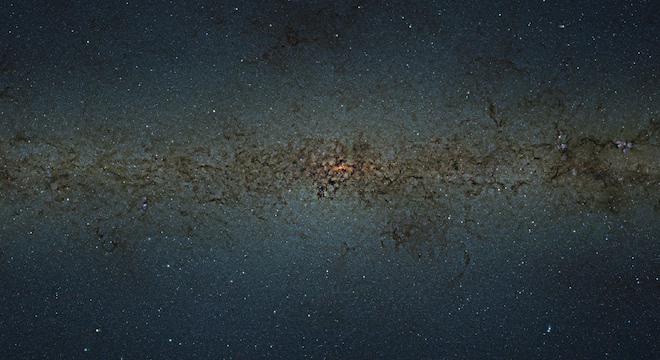The central Milky Way Galaxy is a beautiful environment, as anyone who’s been fortunate enough to gaze upon a clear, rural sky knows well.
But it’s scarcely looked as breathtaking as it does in a new nine gigapixel (9 billion pixel) high-resolution composite image captured by the European Southern Observatory’s (ESO’s) Paranal Observatory in Chile, specifically using an instrument known as the Visible and Infrared Survey Telescope for Astronomy (VISTA).
The image, which was posted online by ESO on Wednesday, depicts 173 million different celestial objects, 84 million of which have been determined to be stars, according to ESO scientists. Altogether, the image is one of the largest ever produced in astronomical history and is so far the largest and most detailed of this region of the central Milky Way.
Astronomers are interested in the central region of our galaxy, also known as “the Bulge,” because it contains the oldest stars. Earth, by comparison, is located much further out, closer to the edge, on one of the galaxy’s spiral arms, the Orion arm.
“By observing in detail the myriads of stars surrounding the centre of the Milky Way we can learn a lot more about the formation and evolution of not only our galaxy, but also spiral galaxies in general,” said astronomer Roberto Saito of the Pontificia Universidad Católica de Chile, the leader of a study that produced the new image, in a statement posted by ESO Wednesday.
Here’s a wider view from ESO showing just what region of the sky VISTA focused on for the new image:

The nine-gigapixel image actually consists of thousands of images captured by the VISTA telescope’s 16 infrared detectors and stitched together. It measures 108,500 by 81,500 pixels.
The infrared view gives astronomers a much clearer view of the central region of the galaxy, peering through clouds of dust that obscure the stars and celestial objects when the region is viewed through a visible-light telescope.
ESO also published the following comparison image to illustrate the improved clarity of the VISTA image (top) versus a visible light telescope (bottom):

The image is just the latest from one of VISTA’s six different surveys of the night sky, the Variables in the Via Lactea (VVV) survey, which peers across 520 square degrees and 33 globular clusters.
The location of all the surveys is annotated below in an even wider-angle, further out projection image of the entire Milky Way from ESO.







